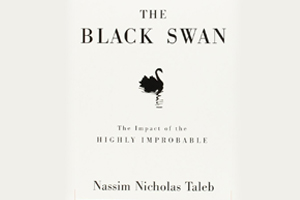In “The Alchemy of Finance”, the billionaire investor George Soros, expounds a new way of thinking about economic behaviour, demonstrating how financial players affect the movement of markets. He shares details of his innovative investment practices, including his ``theory of reflexivity' which underlies his unique investment strategies, along with his views of the world and world order. While the book is a brilliant guide on how financial markets work, it can be a bit complicated and challenging to understand.
Key Take-Aways
- Billionaire George Soros says markets do not tend toward equilibrium and certainty.
- The “theory of reflexivity” states that what participants think of a situation will change that situation.
- The expectations of market participants shape market facts, which, in turn, shape participants’ expectations.
- This constant cycle makes market equilibrium impossible.
- Because humans are uncertain, imperfect and self-reinforcing, so are the markets.
- The theory of efficient markets and rational expectations imply that markets will optimally allocate resources. However, markets are, in fact, inefficient and humans are irrational and biased.
- Fundamentalists say markets are a force for moral good, but they are not.
- Regulation may have been excessive in the second half of the 20th century, but deregulation seems excessive now.
- The international financial system keeps central wealthy countries rich and in power.
- History does not move from outcome to outcome, but from expectation to outcome to expectation.
Economics and Reflexivity
The concept of reflexivity is a complex one. It has two integral parts. One part is the observation of how a person’s thought process about a particular situation influences the situation, while the other part is how the situation influences the way a person thinks about the situation. An individual’s understanding of a situation will always be flawed because in reality what he/she is trying to understand is infact not constant. This means that people really can’t know their situations, because those situations are contingent on what people know about them. It is like the classis chicken and egg story. As a stock market participant you will observe several fluctuations in the market. However, since the underlying conditions are also changing constantly, especially when it’s supposed to be reflecting the changes in the market, it’s a little difficult to show a firm relationship between the market and your expectations.
Most market theories can be divided into technical and fundamental theory. While the technical theory limited, if any, use to the market practitioner, the fundamental theory is quite interesting since it’s nothing but an extension of the equilibrium theory. It focuses on the relationship between the companies and their stock prices. While it is commonly accepted that the fundamentals of a company have a strong influence on its stock price, not many consider that the stock prices can also affect the fate of the companies. Any discrepancies between fundamental values and stock prices are quickly ignored and are blamed on the company’s future developments. One must also think in the opposite manner and consider the possibility that stock prices do not necessarily reflect the underlying values. In fact, the market has too many distorting valuations and these distortions also have the ability to affect underlying values. Of course, this is not to say that the events that take place don’t correspond with the expectations of the participants. However, markets tend to be biased at all times in at least one direction. In addition, the markets also possess the power to affect the events they can anticipate.
“Markets cannot and will not arrive at a stable equilibrium precisely because the thoughts and therefore the actions of market participants will affect market behaviour: The market will in turn influence the ‘fundamentals’ and shape new expectations in the continuing reflexive process.” [ – Paul A. Volcker, foreword]
One of the mainstays of contemporary finance is the theory of rational expectations. It proposes that investors are rational and thus their current expectations provide a full picture of future events. It assumes that market prices are efficient, which means that they incorporate and express the aggregate effect of all available information. This theory suggests that financial markets will move toward equilibrium based on participants’ expectations unless some external shock introduces new information. Taken together, efficient markets and rational expectations imply that markets will optimally allocate resources. However, considerable evidence indicates that this is false.
“The concept of reflexivity is very simple. In situations that have thinking participants, there is a two-way interaction between the participants’ thinking and the situation in which they participate.”
To assume that all market participants are rational and always act in their own best interest is irrational. To be fair, participants do make investment decisions that they assume to be in their best interest. However, market participants have an imperfect understanding of the market and are strongly influenced by behavioural biases. This means that what they consider to be in their best interest might infact be just the opposite. Therefore, they often make decisions that turn out not to be in their best interests, even though they thought they would be.
“Bias prevailing in the financial markets can affect the so-called fundamentals that markets are supposed to reflect.”
Speculators expect prices to rise, so they try to buy low now to make a profit later. Their buying pushes prices up, so it appears as if their expectation of rising prices was correct. This self-reinforcing process continues until the market can no longer sustain it. Markets are usually wrong, but they look right because of self-reinforcement. The incorrectness of this bias is exposed at inflection points, where expectations change – but only at inflection points. Bubbles are only one example of reflexivity in action.
The “Human Uncertainty Principle”
The human uncertainty principle is something like the “Heisenberg uncertainty principle” in physics. However, humans tend to be more uncertain than physical particles. This is because immutable laws of science do not change because of what people think of them. However, the reality is different for humans. Human beings are capable of creating social reality based on their own perceptions and understanding of their environment. Consequently, they make decisions based on what they believe and expect, not on what they know with certainty, because there can be no certainty. Since their decisions are not necessarily based on knowledge, the results of their actions are likely to be something other than what they expect. This can be detrimental to making optimal investment choices. One must always stay alert to the possibility that any investor can make mistakes. You must always be tuned into the reality that decisions usually have unexpected, unintended results. Financial markets often support delusions and deceptions, as in booms and busts, and even successful outcomes do not prove any given hypothesis.
“The ‘human uncertainty principle’...holds that people’s understanding of the world in which they live cannot correspond to the facts and be complete and coherent at the same time.”
Power Relationships
Power relationships and political events can seriously impact the ability of market participants to make free exchanges. The world financial system has two types of countries: those in the center and those on the periphery. International debts are denominated in the currencies of the center countries. Therefore, these nations have a sharp advantage over the peripheral countries. They can borrow in their own currencies, but peripheral countries cannot. This gives the center countries the liberty to use countercyclical fiscal and monetary policies that are designed to keep their economies strong, for example, applying financial stimulus rulings when recessions loom.
“Only when the fundamentals are affected does reflexivity become significant enough to influence the course of events.”
Countries at the periphery do not have this power, because they have borrowed in foreign currencies. Thus, they must subject themselves to the discipline of international lenders, such as the International Monetary Fund, which defends this system and the interests of the center countries. If the price of protecting international lenders is a recession in peripheral countries, the lenders are willing to pay it. Of course, they aren’t really the ones who pay. It is the peripheral country that pays it.
Financial globalisation is one of the main items on the agenda of market fundamentalists. Governments no longer have the power to control the movement of capital across the globe, which flows easily and efficiently to whatever venues that offer the best-expected returns. Market fundamentalists have been remarkably successful in reducing taxes, deregulating and spurring one of history’s longest bull markets. The United States and the United Kingdom profited immensely by acting as bankers to the world and as investment destinations for global savings. The heavily indebted countries of the periphery paid a steep, painful price.
“Participants are not in a position to prevent a boom...even if they recognize that it is bound to lead to a bust. That is true of all boom/bust sequences. Abstaining altogether is neither possible nor advisable.”
Back in the 1970s, banks were considered to be boring and dull. Managements found it tough to forget the failures experienced in the 1930s and safety seemed like the best option. However, there were changes occurring underneath. There slowly emerged a new breed of managers and other people who conducted business aggressively. With a different school of thought, these bankers believed in pushing the envelope and certainly went far ahead than what was acceptable at that time. They understood that they had to increase the equity capital in order to continue their growth. During this time, there was a tremendous demand for oil and the money just piled up in the countries that had a huge stock. Petrodollars became the new buzzword and those who had it yielded much power. The banks were more than happy to lend and also found many takers. This sort of international lending attracted many other bankers who didn’t even have any experience in their field. It went on to such an extent that the banks could no longer keep up with the fast pace and were stretched to the maximum. As the position of the debtor countries worsened, the banks found it almost impossible to disengage themselves from the chaos. Therefore, it is extremely crucial to supervise financial institutions. In addition, it is also important to have some kind of an intervention to prevent the situation from going completely out of control.
Market Fundamentalists
The theory of market equilibrium is built on the assumption that investors are rational and that markets will allocate resources in an optimum way. However, if the markets do not seek equilibrium then there is no reason for them to be optimal. In fact, markets do not move toward equilibrium – reflexivity and human uncertainty ensure that equilibrium is unachievable.
“Financial success depends on the ability to anticipate prevailing expectations and not real-world developments.”
The ideas of market fundamentalism have swayed many people in the financial world. It is important to understand that even though market results are objective, measurable facts, they are not “true”. This stems from the fact that markets lack equilibrium and are hence, never stable. Every activity we take up is quickly measured by the amount of profit it can deliver. The fact that people now measure the quality of an artist based on the price paid for the artist’s work, not on its artistry or merit, indicates how far market fundamentalism has gone. We are all driven with the urge to think about profit even while doing something that is supposed to be motivating and inspiring. The motive to make a profit is so deep-rooted that it’s almost impossible to consider anything else other than making money. Moreover, any values that the market cannot measure seem incomprehensible to the fundamentalists.
Markets tend to instability – not equilibrium – because of reflexivity and uncertainty, the boom-and-bust process, and other elements. Markets are unstable and are increasingly growing more unstable. While regulation in the 20thcentury may definitely have been considered excessive, deregulation seems excessive now. The world may need an international central bank and an international currency linked to oil. Markets are not a force for moral good – they are amoral. To the extent that society values stability and moral good, it must bring these values back to the market process with appropriate institutions and regulations.
An investor education initiative
All Mutual Fund Investors have to go through a onetime KYC process. Investor should deal only with
Registered Mutual Fund (RMF). For more info on KYC, RMF and procedure to lodge/redress any complaints –please visit onhttps://www.edelweissmf.com/kyc-norms
Mutual Fund Investments are subject to market risks, read all scheme related documents carefully.
Trending Books
MUTUAL FUND INVESTMENTS ARE SUBJECT TO MARKET RISKS, READ ALL SCHEME RELATED DOCUMENTS CAREFULLY.













